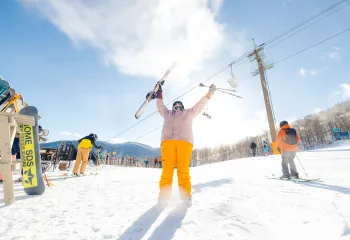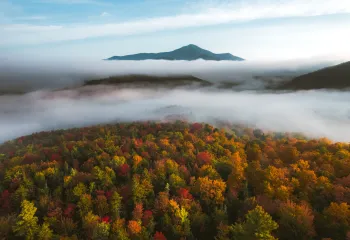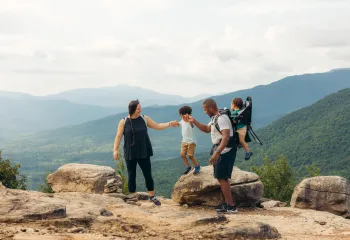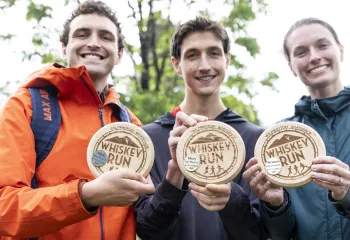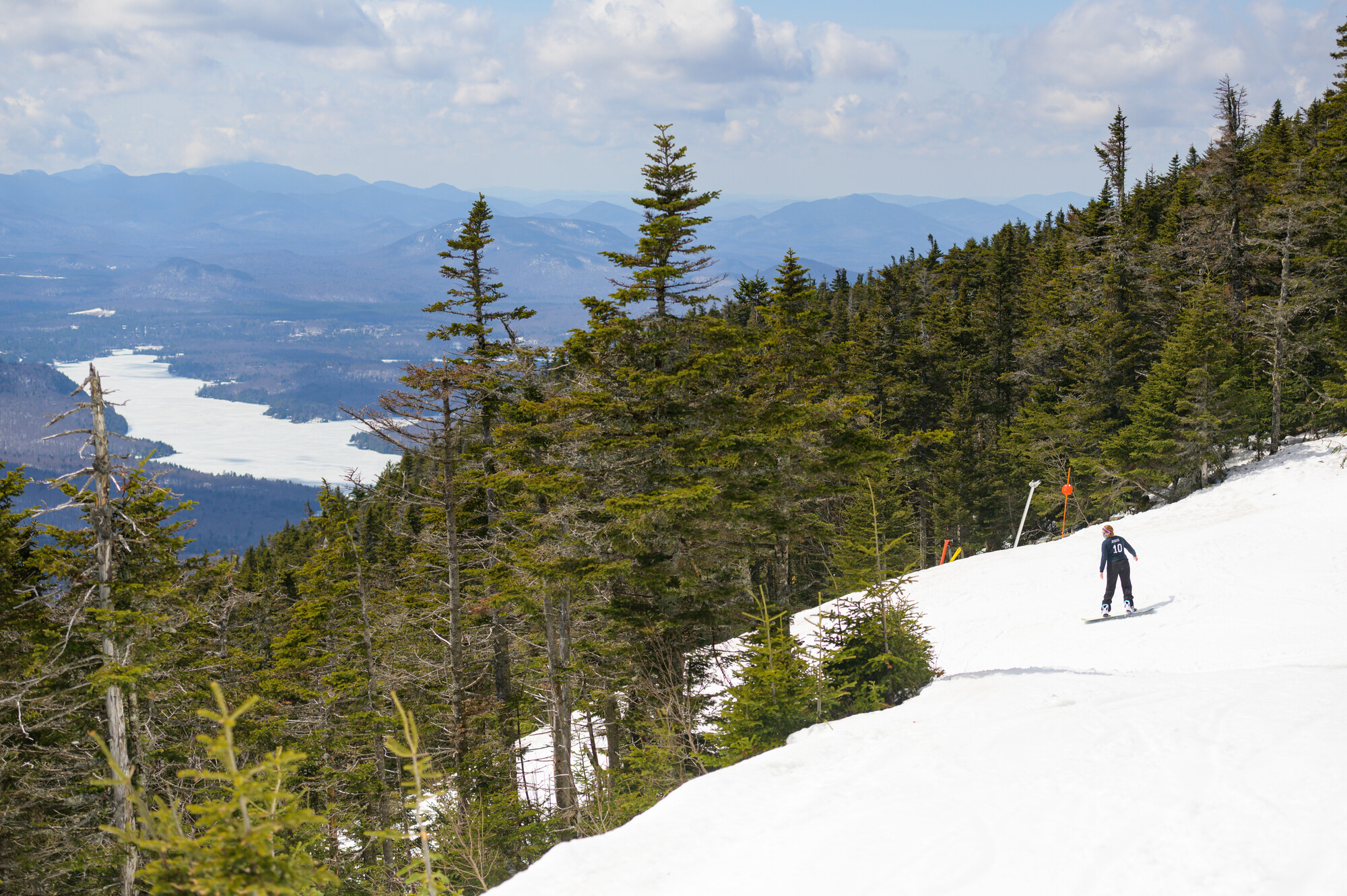
Throughout the Whiteface Region, the views are amazing everywhere you go. We’ve got an icy river dotted with snow-capped rocks, a handsome covered bridge, and, rising majestically from the earth, a big, snowy mountain with a distinctive profile (how many mountains do you know with a stone “castle” on top?). This is the home of Whiteface Mountain, which, depending on your perspective, is either peeking around a bend in the road or looming over you when you’ve got a pair of skis on hand.
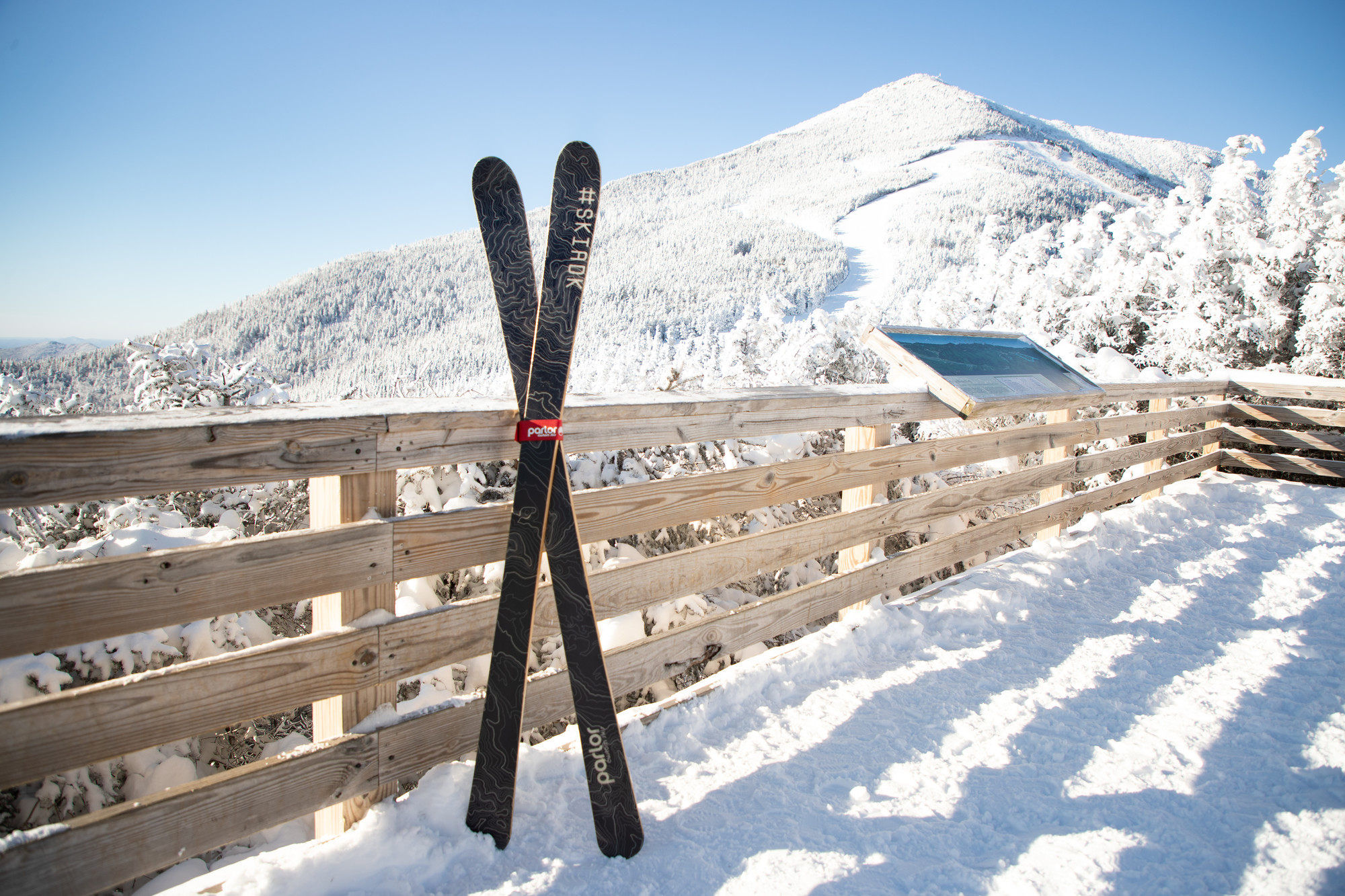
Never let a little snow stop you
How many everyday athletic events — much less Olympic events — got their start simply as a means of getting around? Every winter, millions of people across the globe hit the slopes for fun, exercise, and competition. What many skiers may not realize is that for many, many, years, skiing wasn’t just for fun or to see who could get to the bottom of the hill fastest. Skiing, particularly in Scandinavia and northern Russia, was a faster, better way to get around in the depths of winter. Uphill, downhill, across frozen fields, through dense forests, skis made life a little easier for many.
Fun fact #1: The word “ski” comes from the Old Norse word skīth, which means stick of wood.
Skiing for fun, exercise, and sport came about in the early 19th century, when adventurous Scandinavians with a passion for winter just couldn’t get enough time out in the snow. Immigrants brought skis to North America and the adventure of speedy life on snow began to grow in the Americas. The Adirondacks had already become a summertime destination and as winter sports were introduced, wintertime visitation became more popular, as well.
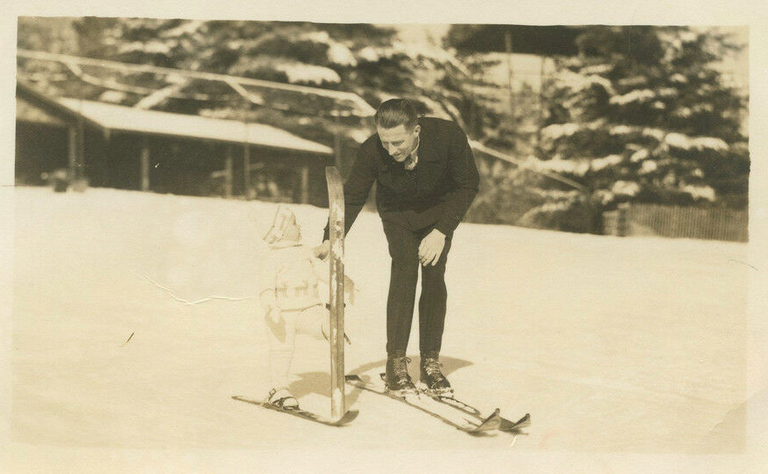
Fun fact #2: The youngest Olympic medalist in alpine skiing is Austrian Traudl Hecher. She was sixteen when she won a bronze medal in 1960! That's not her in the photo above. That's a super cute Adirondack toddler.
Speedy, just like a rabbit
For people interested in skiing in the Adirondacks, the name Herman Johannsen may not ring any sleigh bells, but the name “Jackrabbit” should! The famous and much-adored Jackrabbit Trail, which extends from Saranac Lake to Keene, was named after Johannsen, whose nickname was Jackrabbit. He was a Norwegian who started skiing as a small child, moved to the US as a young man, and eventually lived in the Adirondacks and Canada, skiing and living an adventurous life. He earned his nickname for being quick and sure-footed on the snow.
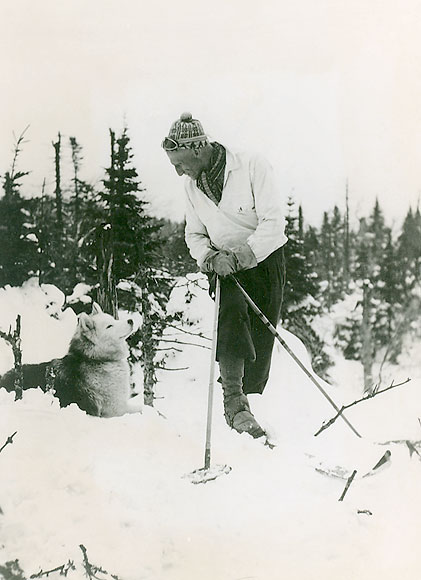
Fun fact #3: All his life, Herman Johannsen preferred hiking to chair lifts. He lived to the amazing age of 111.
For a long time, there were no real distinctions between cross-country and alpine skiing. People like Jackrabbit Johannsen skied everywhere, including hiking up mountains to ski down them on telemark bindings. If there was snow, there was skiing, period. Jackrabbit did it all, everywhere he went: built ski jumps, laid out trails in the Adirondacks, competed in races, and hiked up mountains to ski back down. Jackrabbit, Otto Schniebs, and Hannes Scheider laid out the first proper skiing trails at Whiteface, on Marble Mountain. It was a popular spot, and there are still old timers who remember skiing there in the 1940s and 1950s, but the conditions were tough and the Marble Mountain slopes would close and the current ski resort would begin development in the late 1950s.
Whiteface meets the world
Have you skied Whiteface? Marveled at the views of the Adirondacks while making graceful (or at least upright) turns, taken lessons at Bear Den and got your ski legs? It's pretty special, isn't it? From the very beginning, Whiteface was always meant to be something really unique. That included planning a trail that was at least 2,800 feet long in order to meet Olympic standards. Instead of the T-bar and rope tows at Marble, chair lifts were built, the conditions were better, there was more room to grow, and the rest is alpine magic. Over the years, the number and length of trails has increased, terrain for snowboarding has joined the fun, and the vertical drop? Well, it got even bigger and better, so that it's the biggest east of the Rockies.
With consistently good skiing available, and awesome teams of groomers and instructors, Whiteface Mountain became one of the best places to ski in the Northeast. It's a place to learn, make family memories, and enjoy the exhilaration of skiing. Perhaps most famously, Whiteface did get to utilize those Olympic standards, hosting the alpine events for the 1980 Olympic Winter Games, held in nearby Lake Placid.
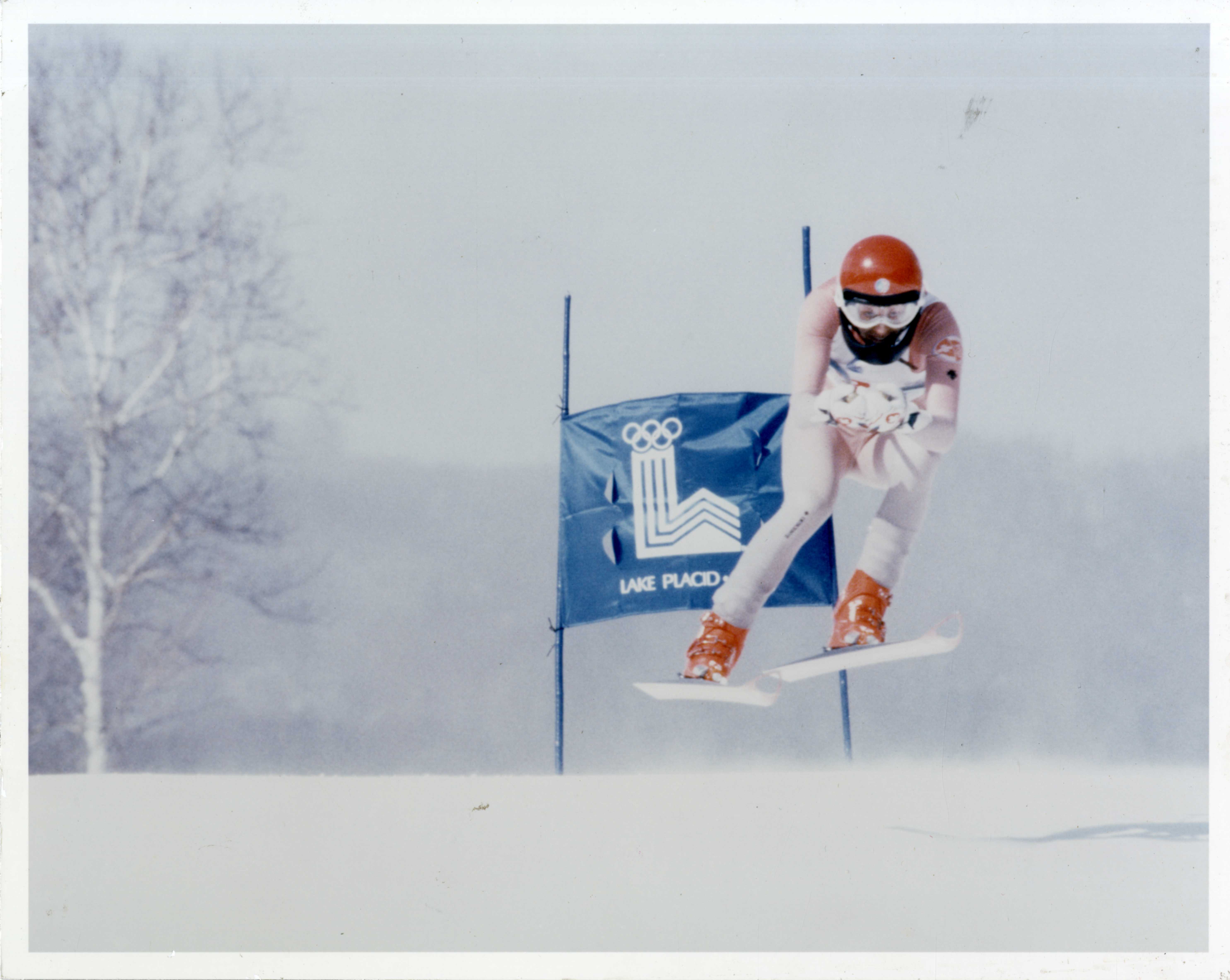
Fun fact #4: At the 1948 Olympic Winter Games in St. Moritz, Switzerland, Henri Oreiller of France won the men's downhill with a time of two minutes, fifty-five seconds. At Whiteface in 1980, the same event was won by Austrian Leonhard Stock with a time of one minute and forty-five and a half seconds.
Athletes, coaches, and spectators came from across the globe, across the state, and just down the road to enjoy the Olympic spectacle, which served as inspiration for many local athletes. Kids from all around the Whiteface area grew up skiing the mountain, improving their skills, taking a few tumbles, and getting back up again for the next run. Some ski just for the joy of it, some compete on a variety of levels, and some are so exceptional that they compete at the international level. Occasionally, Whiteface proves to be the training ground for a local Olympian.
Andrew Weibrecht grew up in Lake Placid, so Whiteface was essentially in his backyard. He gives the mountain a lot of credit for his successes, noting, "In a word it was amazing. To have a venue of that caliber so close to home is an incredible asset for the community as a whole. I had the opportunity to ski a lot as a kid, and Whiteface shaped the type of skier I became in a very major way."
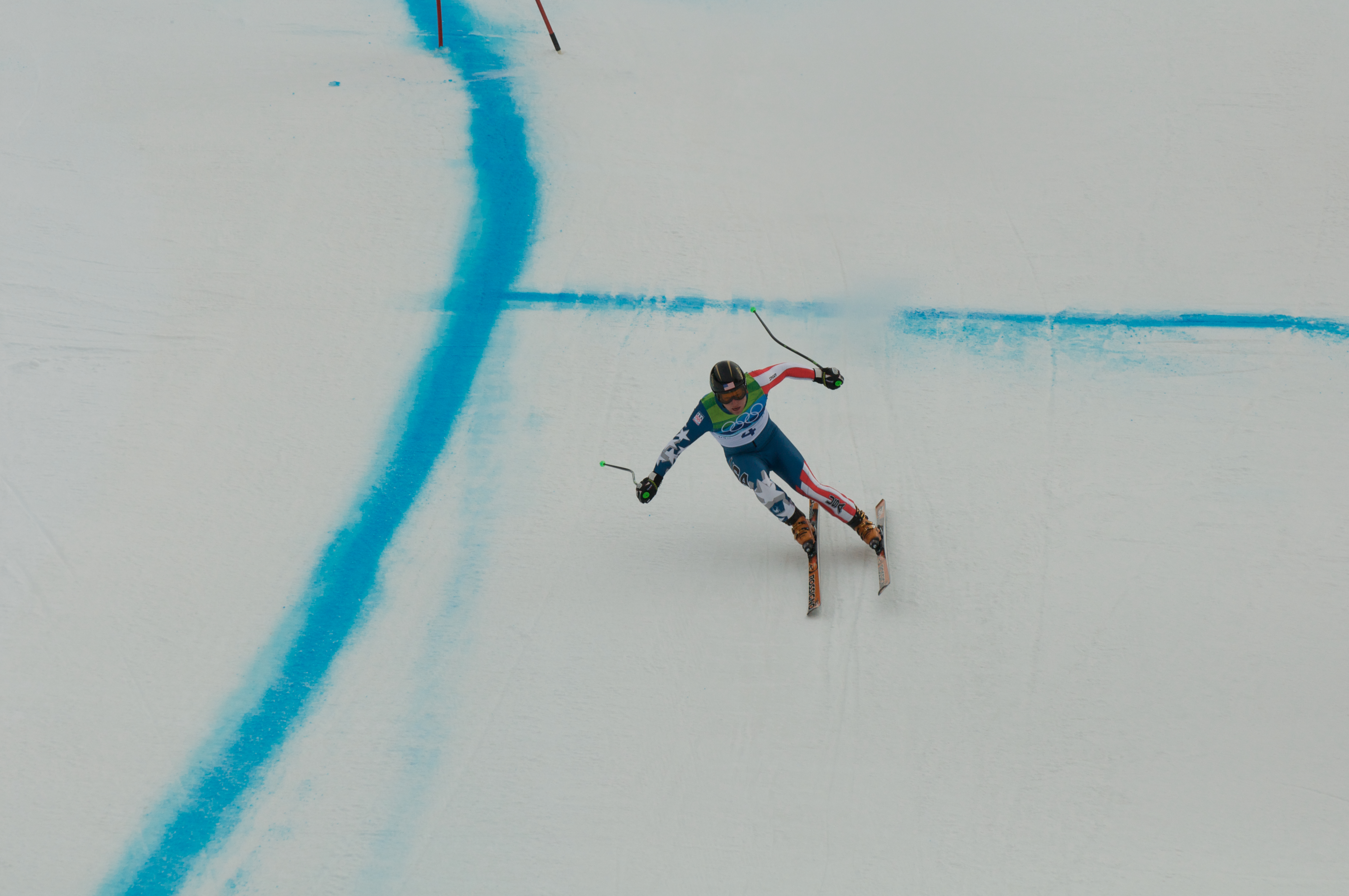
Growing up skiing the mountain, he was himself inspired by the Olympic glories of the past, on the very mountain he trained on. He shares that he felt inspired by "the Olympic history and heritage of the entire region. It’s hard to not feel inspired when, even as a kid, you are constantly surrounded by that energy and vibe. On a more basic level, the Olympics were largely what brought my parents to the region so had it not been for the games, I might not have even had the opportunity to grown up in this amazing area." All of the Adirondacks cheered when Weibrecht won a bronze medal at the 2010 Olympics in Vancouver, then again with a silver medal finish in 2014 in Sochi. From the easy riders to the daredevils, Weibrecht's successes have inspired plenty of Adirondackers to get out there, have fun, and do their best.
To the future, with speed
Now, local kids and those visiting with their families for a winter vacation can ski the same mountain that helped make Weibrecht an Olympian. They can bask in the Olympic glow that permeates the Whiteface Region and they can dream big. Whiteface, a ski center that Weibrecht says is, "as a race venue, is every bit as difficult and demanding as any world cup track I raced on," continues to think big. In 2023, the mountain was the site of the alpine events for the Lake Placid 2023 World University Games, an event that once again brought the world to the state's legendary Olympic mountain, where the snow is awesome, the history is inspiring, and the challenges are worth it.
"It was such an asset to grow up at Whiteface, and it prepared me for the absolute toughest venues in the world," shares Andrew Weibrecht. "The more difficult a venue was, the more comfortable I felt racing on it, all because I learned to ski at Whiteface."
Visit the Whiteface Region this winter to get your own dose of skiing (and riding!) magic, check out the best après-ski close to Whiteface Mountain, and enjoy the spirit and spirited history of the mountains. If you're excited about the unique history of the mountain and the area, be sure to check out the Wilmington Historical Society. It is a fantastic resource, with photos, artifacts, and knowledgeable members who love to share history. If you do one fun new thing this winter, make it a trip to Whiteface Mountain.

